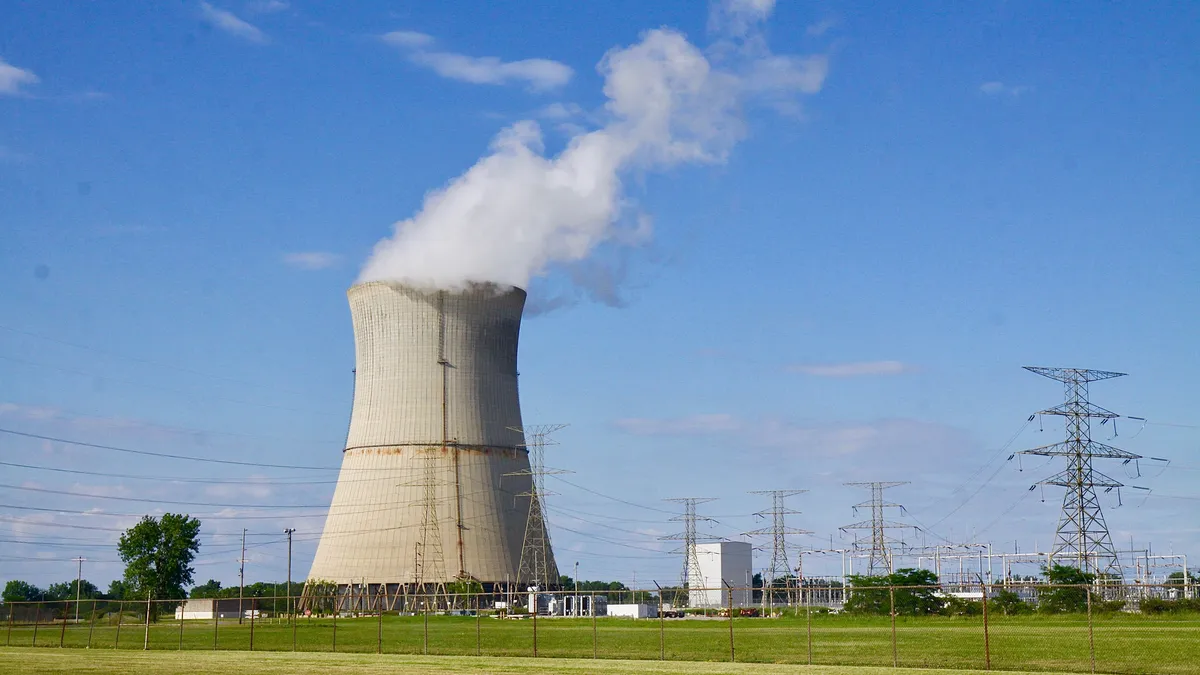The Federal Energy Regulatory Commission extended its review of Vistra’s proposed $6.3 billion deal to buy Energy Harbor’s nuclear power plants and retail electric business by about six months to April 11, the agency said Friday.
FERC said it needed more time to fully analyze the planned deal, which was revised in mid-September when Vistra and Energy Harbor offered to sell nearly 400 MW of generating capacity in Ohio to quell concerns the proposed merger would give Vistra the ability to unfairly influence power prices in the PJM Interconnection market.
Without FERC action, the Vistra-Energy Harbor merger application would have been deemed approved 180 days after it was filed on April 17. FERC Commissioner James Danly dissented from the decision to extend the review in a statement that FERC said will be issued later.
Vistra continues to aim for closing the transaction by the end of this year, according to Meranda Cohn, a spokeswoman for the Irving, Texas-based company.
“FERC does not have to, and we do not read the order to suggest that it will, use the full extension period before acting,” Cohn said Monday in an email. “We have asked FERC to act promptly since we have demonstrated through our filings that the transaction meets the regulatory standard of review.”
The Federal Communications Commission and Nuclear Regulatory Commission have signed off on the merger, leaving FERC the remaining regulatory hurdle for Vistra and Energy Harbor to close the deal.
Under the proposed deal, Vistra will create a new holding company called Vistra Vision, combining Energy Harbor's and Vistra’s nuclear assets, retail businesses and renewable energy and energy storage projects. Nuveen Asset Management and Avenue Capital Management II, Energy Harbor’s majority owners, would receive a 15% stake in Vistra Vision, with Vistra owning the rest of the holding company.
Vistra and Energy Harbor’s offer to sell two generating units in Ohio totaling 386 MW would do little to diminish Vistra’s market power under the proposed transaction, Monitoring Analytics, PJM’s market monitor, told FERC last week.
“Even with the divestiture, Vistra would have market power with respect to local constraints in the PJM market,” the market monitor said. “Exercise of that market power to raise prices would raise energy market revenues for the Energy Harbor nuclear units.”
The Office of the Ohio Consumers’ Counsel, or OCC, and the Northeast Ohio Public Energy Council, known as NOPEC, continue to oppose the transaction, despite the planned divestiture of Vistra’s 369-MW gas- and oil-fired Richmond power plant and 17-MW oil-fired Stryker unit, according to filings they made at FERC on Oct. 10.
The proposed sale of the two power plants — which make up less than 6% of the total capacity under the merger — will not offset the harm the transaction would have on competition in Ohio’s retail electricity markets and on consumers who rely on the market for lower prices and greater innovation, the OCC said.
The proposed divestitures won’t fix Vistra’s post-merger incentive and ability to engage in anticompetitive conduct when the grid is constrained, NOPEC said. If FERC approves the merger, to limit Vistra’s ability to manipulate PJM’s markets, the agency should require Vistra to sell the output of Energy Harbor’s three nuclear plants under long-term power purchase agreements to unaffiliated buyers, the council said.















